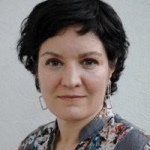We participate in Europabon, the biodiversity observation project at the service of European public policies
We are involved in the European project H2020 EuropaBON (Europa Biodiversity Observation Network: integrating data streams to support policy), which aims to create a standard for controlling biodiversity and ecosystems in Europe, to integrate data and support public policies.
On behalf of CREAF, the researchers Lluís Brotons (from CREAF-CTFC), who coordinates de work package 3, and Sergi Herrando (from CREAF-ICO) participate in the project and are integrated into an international team coordinated by the Martin Luther Halle-Wittenberg University (MLU) and the German Center for the Integrative Biodiversity Research (iDiv) Halle-Jena-Leipzig.
EuropaBON aims to be a systematic, up-to-date and global information system and to become key to establishing well-founded public policies. Therefore, it wants to make it easier to have comprehensive studies and data, harmonize those that are already published and clarify how they can be integrated. Above all, its will is to adapt to the needs of people with responsibility for making political decisions and, therefore, it is aligned with the EU Strategy on Biodiversity for 2030 and in accordance with the European Green Deal.
Monitoring biodiversity
Work package 3 coordinated by Lluís Brotons assesses different existing biodiversity monitoring data sources in Europe to identify their current gaps and bottlenecks in terms of content, spatial and temporal coverage, data flows and availability, as well as cost-effectiveness. The results will be the basis of Work Package 4, which aims to provide a new design for biodiversity monitoring in Europe, improving existing ones to make them more representative, maximise benefits and better integrate into wider biodiversity policy.
The work in blocks 3 to 5 is always developed in a dialogue with stakeholders, to assess whether the deliverables produced by the project meet user requirements. At the end of the project, the key stakeholders will trigger the establishment of terms of reference for a Biodiversity Monitoring Coordination Centre to implement EuropaBON.
Collect synergies
The initiative is directly connected with two recent large-scale research projects in which Lluís Brotons and Sergi Herrando have participated: the new European Breeding Bird Atlas (EBBA2) and the Observatory of Natural Heritage and Biodiversity in Catalonia, linked to the Report on the State of Natura 2020 in Catalonia. "The intention of EuropaBON is to work with the European Commission to organize information on biodiversity and take advantage of synergies with the initiatives promoted by the Observatory", explains Lluís Brotons.
One of the antecedents in this area is the BID-REX project, which has linked relevant data on biodiversity and decision-making on conservation.
The international team that promotes EuropaBON includes representatives from research centers, universities and entities from Austria (IIASA), Germany (Martin-Luther-Universität Halle-Wittenberg; German Center for Integrative Biodiversity Research (iDiv) Halle-Jena-Leipzig; Helmholtz Center for Environmental Research), Belgium, Bulgaria, Scotland (University of Saint Andrews), Spain (CREAF-CTFC-ICO), Estonia (University of Tartu), Great Britain (University of Reading), Holland (University of Amsterdam), Norway (Norwegian Institute for Water Research) and Portugal (University of Oporto and University of Lisbon), as well as the science and knowledge service of the European Commission (Joint Research Center - European Commission).







